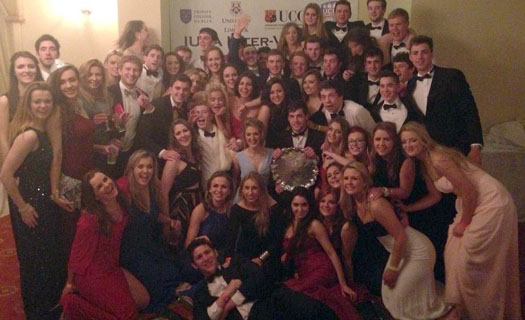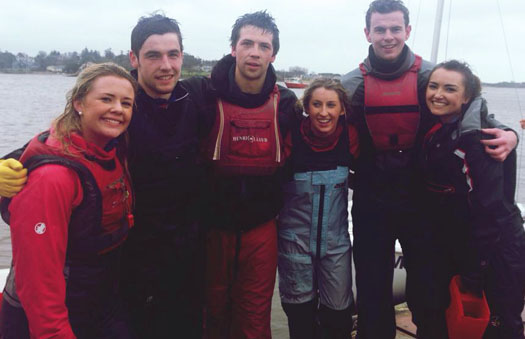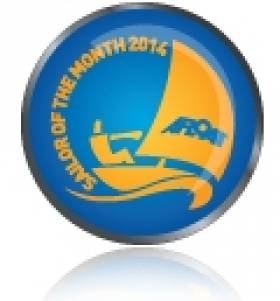Displaying items by tag: MV Cill Airne
#10yearArrival – The unique venue of Dublin’s only floating bar and restaurant located on the Liffey in the form of MV Cill Airne arrived to the capital a decade ago as of last Thursday, writes Jehan Ashmore.
At that stage Cill Airne was about to embark a new career during the flagging tail-end of the Celtic Tiger era. The economic tide however has begun to float some boats in Dublin, following a visit made last week. Patrons crammed the bars and spilled out onto the sun soaked deck with views of the Liffey landmarks while a deck below diners enjoyed the environs of the timber panelled restaurant.
The former Cork Harbour Commissioners (Cobh) based trans-Atlantic ‘liner’ tender dating to 1962 was according to publicity material accommodated 1,000 passengers, mail and even cars. Among the rich and famous conveyed were Hollywood stars Laurel & Hardy and President Eisenhower. The 501 gross tonnage tender along with elder sister Blarna were built by the Liffey Dockyard. This yard no longer exists nor the business that ran from the nearby graving drydock (No.2) in Alexandra Basin that finally closed this year.
The pair were the last riveted ships to be built in Europe and to a design based on the Mersey ferry still served by fellow veterans, Snowdrop and Royal Iris of the Mersey. As far as the Cork tenders are concerned they had two saloons in which one incorporated a tea-bar served by crew that totalled 10. Such trade was put to an end when jet aircraft took over the regular ‘liner’ era trade between England and the United States.
It was the Cork Institute of Technology that acquired the Cill Airne as a nautical training ship on the River Lee and lower Cork Harbour where in 1996 the ship participated at the Naval Service Jubilee fleet review. This was led by the last ever Verolme Cork Dockyard ship, the flagship L.E. Eithne with President Mary Robinson on board during the ceremony attended by several foreign navies.
Cill Airne became obsolete following the opening in Ringaskiddy of the National Maritime College of Ireland that is equipped with a computer bridge simulator. She was sold to new owners that involved a major restoration project by the Irish Barge & Fabrication Company. However firstly Cill Airne called to Cork Dockyard to iinclude work to remove ugly training equipment followed by internal design work at the Hegarty Boatyard, Oldcourt outside of Skibbereen.
It was upon Cill Airne’s call to Dublin that took place on 25 May 2007 that it was noted that new steel work was added to the upper deck. This in-completed area would become what is now the upper bar that affords wonderful view overlooking the Liffey.
This additional superstructure along with see-through wind-shelter screens has benefitted patrons but in design terms these features have to purist’s diminished the ship’s original aesthetics. The tender originally had only the funnel abaft of the wheelhouse and a pair of lifeboats near the stern.
To those who have a keen interest in rare surviving Irish built ships, there is a photo of Cill Airne depicting the veteran vessel during its incomplete state when covered for a piece contributed to the Ships Monthly issue of August 2007.
In addition to stories covering the restoration project with both exterior and interior shots of the luxurious fit-out appearing in Inshore-Ireland February 2006, and following the veteran venue’s opening captured in issues February and April 2008.
Simon Doran is Sailor of the Month for March
#sailorofthemonth – Simon Doran of Courtown SC sailed his fourth intervarsities for UCD in Wexford five weekends ago, and played a key role in bringing the Dublin College in as Irish Champions for 2014. The name Doran will not disappear from the UCDSC listings, however, as his younger brother Philip was also a member of the winning team, and he will be taking over the baton of carrying the family name in intervarsity sailing in the years ahead. The next contest will be the historic Sailing Colours Match between UCD and TCD on the Liffey from the MV Cill Airne in the heart of Dublin on Saturday April 12th with the first race at 10.0am.
While we particularly honour Simon Doran for his continuing high-achieving input into student sailing, it should be acknowledged that this year's Irish Open Nationals was successfully sailed despite a period of meteorological mayhem, so it was a true team effort at all levels afloat and ashore. And thanks to sound decisions by race officers Aidan MacLaverty and Dave White, as well as the hospitality and versatile sailing water provided by Wexford Harbour Boat Club above the bridge on the Slaney Estuary, a full programme was put through for the hard-worked and well-reefed Fireflies, which continue to give sterling service as the boat of choice for team racing.
The full team which took the title for UCD were Simon Doran & Jan Dolan, Philip Doran & Bella Morehead, and Conor Murphy & Eimear McIvor. And while of course this monthly award is for the sailing achievement, we'd also like to praise all Ireland's college sailors for their spirited turnout in full black tie mode for their annual dinner in mid championship.

The Irish Varsities ball was held in Wexford as part of the IUSA Championships

The winning UCD team celebrate their Varsity title
It had a wonderfully cheering effect on the entire sailing community at a time when most of us were more concerned by wondering if our boats would be blown over in the boatyard, or if the roof would come off the house, or if not, then would the house be flooded out?
Dublin Port: As You’ve Never Seen It Before
On board the open-topped yellow tour-boat RIB, an audio commentary firstly informs you about the M.V. Cill Airne, built nearby in the old Liffey Dockyard, nearly fifty year ago. Discover why she was one of the last riveted built vessels in Europe, her days as liner-tender and the rich and famous who threaded her decks.
Heading downstream the former lightship Kittiwake is berthed opposite the O2 Arena. She was one of the last lightships to serve in Irish waters at the South Rock station off Co. Down. In complete contrast a ferris-wheel revolves in the background but no sooner the boat slips under the East-Link Toll-Lift bridge which opened in 1984.
On the other side of the bridge a small non-descript looking grey-hulled motorboat lies at anchor, on her bow is painted the figure 11. So what's the story here!...here's a glue: 'Don't pay the ferry man until you get to the other side!...
Past Poolbeg Marina, giant blue-gantries cranes of the Marine Terminal Ltd (MTL) are busy unloading from Karin Schepers, a containership previously reported on Afloat.ie. Look out for the ports 'graffiti', the work of crews who make their mark by painting the name of their ship and also the mural of the late Ronnie Drew of The Dubliners.
Opposite this terminal is the ports largest basin, Alexandra Basin, named after Queen Alexandra. Subject to port security, the tour may include entering the basin should there be a particular vessel of note.This also allows for views of the dock-gates of the Dublin Graving Dock, one of only three large ship-repair facilities on the island of Ireland. Neighbouring the graving dock is where the Liffey Dockyard once stood.
Before the tour passes the towering twin stacks of the former ESB Poolbeg electricity power station is tucked away Pigeon Harbour. Learn more about its hotel conveniently sited beside where packet-ships regularly plied, essentially the ferryport of its day. Its modern-day counterpart faces opposite on the north quays where up to 17 sailings daily operate on the Irish Sea.
Marvel at the length of the impressive Great South Wall, why was it called 'Great' and why was it built?... What can be revealed is that Captain William Bligh of "Mutiny of the Bounty" fame was a major figure in the project, when the wall was completed in 1795.
The commentary has many more fascinating facts, figures and the occasional anecdote told with typical Dublin wit. So if you live within 80km (50-mile) radius of the capital, then the chances that the shirt you wear, the breakfast cereal you ate and the car you drive, most likely came through Dublin Port as almost 75% of goods serve this hinterland.
More on Dublin Bay here
- Dublin Port
- River Lee
- Sea Safari Tours
- Poolbeg Marina
- River Liffey
- Ports and Shipping News
- ESB
- Karin Schepers
- EastLink bridge
- Dublin Port & River Liffey Tours
- Dublin ferryport
- MV Cill Airne
- ESB Poolbeg powerstation
- Alexandra Basin Dublin Port
- Liffey Dockyard
- Dublin Bay boat operator
- Marine Terminal Ltd
- MTL
























